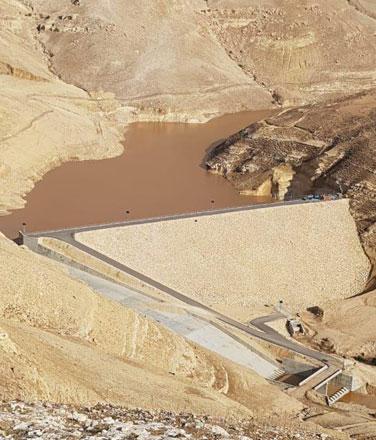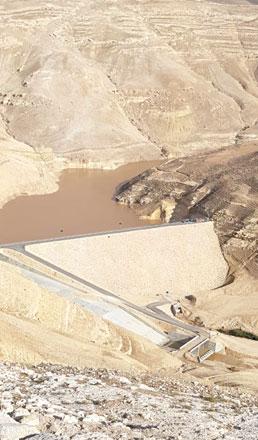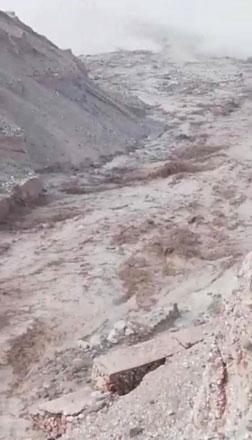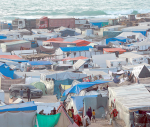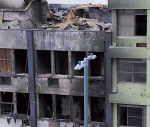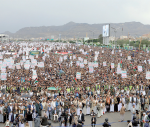You are here
Independent experts examining report on Zarqa-Maeen Dam
By Hana Namrouqa - Nov 01,2018 - Last updated at Nov 01,2018
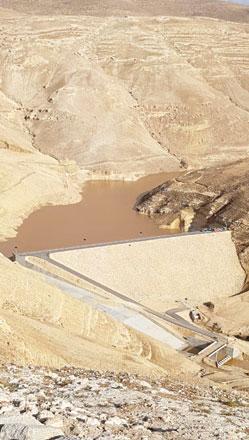
The Zarqa-Maeen Dam in the Dead Sea area is intact and irrelevant to the flashflooding tragedy, says Water and Irrigation Ministry (Photo courtesy of Water and Irrigation Ministry)
AMMAN — A team of independent experts in construction, hydrology and geology received on Wednesday a government-complied report on the Zarqa-Maeen Dam, which is claimed to have exacerbated last week’s deadly flashflood in the Dead Sea area, where 21 people lost their lives.
The committee formed by Prime Minister Omar Razzaz, following Royal directives, to investigate the incident submitted the report on Wednesday to an independent technical team comprising of the Jordan Construction Contractors Association, the Jordan Geologists Association, the Jordan Engineers Association and companies specialised in the construction of dams, Jordan New Agency, Petra, reported.
The committee submitted the report during its third meeting on Wednesday, during which it also listened to briefings from Minister of Public Works and Housing Falah Omoush and Minister of Tourism Lina Annab on their ministries’ mandates regarding the area as more than one probe have been launched into the fatal flooding, to determine responsibility.
On Thursday noon, the Dead Sea area witnessed flashfloods after the country received heavy, quick rain. Rainwater from the mountains of the capital, Maeen and Madaba among other areas found its way through valleys, reaching the Dead Sea area.
A group of students, their teachers and tour guides, as well as family members, were swept away in a killer flashflood that quickly and suddenly submerged the Zarqa-Maeen Valley, where the schoolchildren were hiking. Twenty-one
people, 16 of whom were children from the same school, were swept to their death, while 43 others were injured.
Following the incident, news reports circulated on social media platforms claimed that the Wadi Zarqa-Maeen Dam, a newly established reservoir some 20 kilometres upstream the Zarqa-Maeen Valley, caused the tragedy when its gates were allegedly opened to let out excessive water or because the dam’s body was faulty and collapsed.
The Water Ministry denied the allegations, stating that the dam has no floodgates in the first place, and that its outlet point only allows 50-70 cubic metres of water per minute to seep down the valley for farmers’ use.
Ministry spokesperson, Omar Salameh, said on Wednesday that the report the ministry provided the investigation committee with contains details on the dam.
“This includes when, why and how it was established, its total capacity, cost, how much water it holds, and, most importantly, its mechanism of releasing stored water,” Salameh told The Jordan Times.
The Wadi Zarqa-Maeen Dam was completed last year, when storage there was also tested and proved to be 100 per cent safe, according to the ministry, which indicated that the dam now stores 25 per cent or 495,000 cubic metres of water out of its total capacity of 2 million cubic metres.
Ministry officials said that ministry’s figures show that the Zarqa-Maeen-Dead Sea area witnessed heavy downpour on Thursday, when the fateful incident occurred, which reached 40mm in one hour.
The Jordan Valley Authority started construction work on the Wadi Zarqa-Maeen Dam in 2015, with the aim of storing floodwater for drinking and irrigation purposes.
The dam was built at a cost of JD10 million to protect the environment and people from flashfloods, provide additional water for crop irrigation and tourist ventures and to expand agricultural lands in the surrounding area, which stretches from Wadi Zarqa-Maeen towards the Jordan Valley, according to the ministry.
Also in the report submitted on Wednesday, the Water Ministry provides details on the country’s dams and outlines its measures to keep the reservoirs safe.
“Ahead of the start of every wet season, the country’s dams undergo annual check-ups and maintenance to ensure they are safe and ready to receive rainwater,” Salameh noted.
Ahmad Yacoub, president of the Jordan Construction Contractors Association, said that the independent committee of experts will study the report and visit the reservoir to find out whether people’s claim that “the floodgates were opened”.
“First and foremost, the dam has no floodgates. However, we are going to investigate if the dam played any role in the tragedy that happened,” Yacoub told The Jordan Times on Wednesday over the phone.
The team of experts are scheduled to visit the dam on Thursday morning, Yacoub said.
“Following our visit to the dam, we are going to issue a report that indicates whether the dam did cause or exacerbate the floods as the public claim,” Yacoub underscored.
As quoted by Petra, Omoush said that bridges in the Dead Sea area were built long time ago and they need maintenance, pointing out that salinity ratio leads to soil erosion beneath the bases of the bridges. He also affirmed that the collapse of the hanging bridge was not related to the flashflooding incident, noting that the bridge is 5km away from the incident site.
For her part, Annab said that the ministry decided on a set of clear standards to avoid floods and prohibit swimming in dangerous water.
She added that the trip was organised by two tourist agencies, one of which is not licenced. She also underlined “notable violations”, such as not heeding safety instructions and ignoring official warnings. Annab concluded that her ministry closed the licenced agent’s office and referred the owners of the unlicenced firm to the public prosecutor.
Related Articles
AMMAN — Official reports and site inspections proved that the Zarqa-Maeen Dam, rumoured to have caused or worsened late October’s Dead Sea t
AMMAN — The Ministry of Water and Irrigation on Saturday denied as baseless news reports circulating on social media claiming the ministry o
AMMAN — Several thousand households in Amman’s western and southern parts will not receive their share of water this week under the water di


